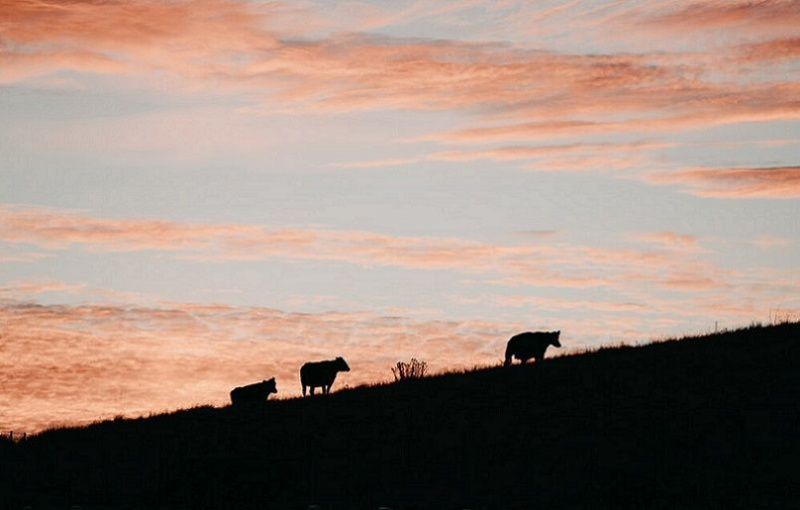USDA Enhances Safety Measures with New Testing for Beef Derived from Dairy Cattle
Sourse: DairyNews.today
The U.S. Department of Agriculture (USDA) has announced a significant step to ensure the safety of the nation's beef supply by initiating a year-long study to test beef derived from former dairy cattle for signs of highly pathogenic avian influenza, commonly known as bird flu or H5N1.

This move comes as part of a broader effort to monitor and control the spread of the virus, which has been detected in various animal populations across the country.
Expanded Testing Following Preliminary Safety Affirmations
Emilio Esteban, the USDA's Undersecretary for Food Safety, detailed the new testing regime during a press call, explaining that it follows three previous studies conducted in the spring and summer, which confirmed the safety of the nation’s beef supply. The additional testing will involve holding carcasses until test results confirm they are free of the virus, thereby preventing potentially contaminated meat from entering the commercial market.
Reinforcement of Dairy Product Safety
The announcement was paired with results from a recent U.S. Food and Drug Administration (FDA) study, which further reinforced the safety of pasteurized dairy products. Steve Grube, Chief Medical Officer for the FDA’s Center for Food Safety and Applied Nutrition, highlighted that none of the 167 dairy product samples from 27 states contained viable H5N1, validating the effectiveness of pasteurization.
In addition to testing efforts, the USDA is facilitating a voluntary program for dairy farmers to test milk in bulk tanks for H5N1. This initiative aims to simplify interstate cattle transport without the need for individual animal testing. Eric Deeble, Deputy Undersecretary for Marketing and Regulatory Programs at USDA, reported that the department’s Farm Service Agency has already approved substantial financial support to assist dairy farmers impacted by the virus.
Localized Outbreaks and Preventative Strategies
The conversation also touched on regional disparities in H5N1 incidences, particularly highlighting a concentrated outbreak in Colorado's dairy sector. Deeble cautioned against generalizing these findings nationally, attributing the high number of cases to the unique structure and operations of dairy farms in the area.
Concerns Over Wider Spread Among Domestic Animals
As autumn approaches, bringing increased livestock movements and bird migrations, experts predict a potential rise in H5N1 cases among both dairy cattle and other animals, including domestic pets like cats. Public health officials are particularly focused on understanding the transmission dynamics affecting domestic cats, some of which have contracted the virus despite having no direct exposure to known virus reservoirs.
Expanded Testing Following Preliminary Safety Affirmations
Emilio Esteban, the USDA's Undersecretary for Food Safety, detailed the new testing regime during a press call, explaining that it follows three previous studies conducted in the spring and summer, which confirmed the safety of the nation’s beef supply. The additional testing will involve holding carcasses until test results confirm they are free of the virus, thereby preventing potentially contaminated meat from entering the commercial market.
Reinforcement of Dairy Product Safety
The announcement was paired with results from a recent U.S. Food and Drug Administration (FDA) study, which further reinforced the safety of pasteurized dairy products. Steve Grube, Chief Medical Officer for the FDA’s Center for Food Safety and Applied Nutrition, highlighted that none of the 167 dairy product samples from 27 states contained viable H5N1, validating the effectiveness of pasteurization.
In addition to testing efforts, the USDA is facilitating a voluntary program for dairy farmers to test milk in bulk tanks for H5N1. This initiative aims to simplify interstate cattle transport without the need for individual animal testing. Eric Deeble, Deputy Undersecretary for Marketing and Regulatory Programs at USDA, reported that the department’s Farm Service Agency has already approved substantial financial support to assist dairy farmers impacted by the virus.
Localized Outbreaks and Preventative Strategies
The conversation also touched on regional disparities in H5N1 incidences, particularly highlighting a concentrated outbreak in Colorado's dairy sector. Deeble cautioned against generalizing these findings nationally, attributing the high number of cases to the unique structure and operations of dairy farms in the area.
Concerns Over Wider Spread Among Domestic Animals
As autumn approaches, bringing increased livestock movements and bird migrations, experts predict a potential rise in H5N1 cases among both dairy cattle and other animals, including domestic pets like cats. Public health officials are particularly focused on understanding the transmission dynamics affecting domestic cats, some of which have contracted the virus despite having no direct exposure to known virus reservoirs.
Key News of the Week











